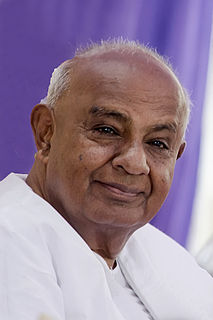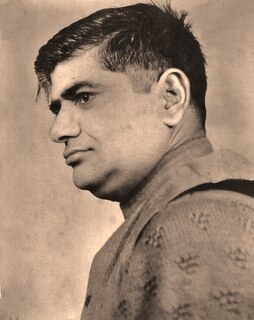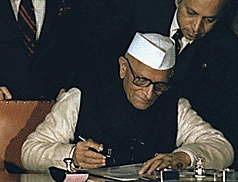This is a list of Indian Prime Ministers by longevity. Where the person in question is still living, the longevity is calculated up to 10 August 2019.
Contents
Two measures of the longevity are given - this is to allow for the differing number of leap days occurring within the life of each Prime Minister. The first column is the number of days between date of birth and date of death, allowing for leap days; the second column breaks this number down into years and days, with the years being the number of whole years the Prime Minister lived, and the days being the remaining number of days after his/her last birthday.

A birthday is the anniversary of the birth of a person, or figuratively of an institution. Birthdays of people are celebrated in numerous cultures, often with birthday gifts, birthday cards, a birthday party, or a rite of passage.

If a Prime Minister served more than one non-consecutive term, the dates listed below are for the beginning of their first term, and the end of their final term.
The median age at which a Prime Minister first takes office is roughly 64 years and 8 months, which falls between Gulzarilal Nanda and Chandra Shekhar. The youngest person to become Prime Minister was Rajiv Gandhi, who became Prime Minister at the age of 40 years, 72 days. The oldest person to become Prime Minister was Morarji Desai, who became Prime Minister at the age of 81 years, 23 days.

The median is the value separating the higher half from the lower half of a data sample. For a data set, it may be thought of as the "middle" value. For example, in the data set {1, 3, 3, 6, 7, 8, 9}, the median is 6, the fourth largest, and also the fourth smallest, number in the sample. For a continuous probability distribution, the median is the value such that a number is equally likely to fall above or below it.

Gulzarilal Nanda was an Indian politician and economist who specialized in labour issues. He was the acting Prime Minister of India for two short periods following the deaths of Jawaharlal Nehru in 1964 and Lal Bahadur Shastri in 1966. Both his terms ended after the ruling Indian National Congress's parliamentary party elected a new prime minister. He was awarded the Bharat Ratna, India's highest civilian award, in 1997.

Chandra Shekhar was an Indian politician who served as the eighth Prime Minister of India, between 10 November 1990 and 21 June 1991. He headed a minority government of a breakaway faction of the Janata Dal with outside support from the Indian National Congress as a stop gap arrangement to delay elections.Chandrasekhar is the first Indian Prime Minister who has never held any Government office. His government was largely seen as a "puppet" and "lame duck" and the government was formed with the fewest party MPs in the Lok Sabha. His government could not pass the budget at a crucial time when Moody had downgraded India and it further went down after the budget was not passed and global credit-rating agencies further downgraded India from investment grade making it impossible to even get short term loans and in no position to give any commitment to reform the World Bank and IMF stopped their assistance. Chandrasekhar had to authorise mortgaging of gold to avoid default of payment and this action came in for particular criticism as it was done secretly in the midst of the election. The Indian economic crisis, 1991, and the Assassination of Rajiv Gandhi plunged his government into crisis.
The oldest living Prime Minister is Manmohan Singh, born 26 September 1932 (aged 86 years, 318 days). The youngest living Prime Minister is the incumbent Narendra Modi, born 17 September 1950 (aged 68 years, 327 days). Manmohan Singh and H. D. Deve Gowda are the only surviving former Prime Ministers of India.

Manmohan Singh is an Indian economist and politician who served as the Prime Minister of India from 2004 to 2014. The first Sikh in office, Singh was also the first prime minister since Jawaharlal Nehru to be re-elected after completing a full five-year term.

Narendra Damodardas Modi is an Indian politician serving as the 14th and current Prime Minister of India since 2014. He was the Chief Minister of Gujarat from 2001 to 2014, and is the Member of Parliament for Varanasi. Modi is a member of the Bharatiya Janata Party (BJP), and of the Rashtriya Swayamsevak Sangh (RSS), a Hindu nationalist volunteer organisation. He is the first prime minister outside of the Indian National Congress to win two consecutive terms with a full majority, and the second one to complete five years in office after Atal Bihari Vajpayee.

Haradanahalli Doddegowda Deve Gowda is an Indian politician who served as the 11th Prime Minister of India from 1 June 1996 to 21 April 1997. He was previously the 14th Chief Minister of Karnataka from 1994 to 1996.
The longest lived Prime Minister was Gulzarilal Nanda, who lived to the age of 99 years, 195 days. (Nanda, a cabinet minister, served as acting Prime Minister when both Jawaharlal Nehru and Lal Bahadur Shastri died in office). Morarji Desai was the second-longest lived Prime Minister, and the longest lived elected Prime Minister lived to the age of 99 years, 41 days, only 154 days short of matching Nanda. The shortest lived Prime Minister was Rajiv Gandhi, who was assassinated at the age of 46 years, 274 days. Lal Bahadur Shastri is the only prime minister to die abroad, when he died in the Uzbek SSR capital of Tashkent in 1966.

Jawaharlal Nehru was an Indian independence activist, and subsequently, the first Prime Minister of India and a central figure in Indian politics before and after independence. He emerged as an eminent leader of the Indian independence movement under the tutelage of Mahatma Gandhi and served India as Prime Minister from its establishment as an independent nation in 1947 until his death in 1964. He has been described by the Amar Chitra Katha as the architect of India. He was also known as Pandit Nehru due to his roots with the Kashmiri Pandit community while Indian children knew him as Chacha Nehru.

Lal Bahadur Shastri was the 2nd Prime Minister of India and a senior leader of the Indian National Congress political party.

Morarji Ranchhodji Desai was an Indian independence activist and served between 1977 and 1979 as the 4th Prime Minister of India and led the government formed by the Janata Party. During his long career in politics, he held many important posts in government such as Chief Minister of Bombay State, Home Minister, Finance Minister and 2nd Deputy Prime Minister of India.
Narendra Modi (17 September 1950) is the first Prime Minister of India to be born after the Independence of India. All other former Prime Ministers were born before the Independence of India. Rajiv Gandhi was the last Prime Minister to be born in the Raj (20 August 1944).

Rajiv Ratna Gandhi was an Indian politician who served as the 6th Prime Minister of India from 1984 to 1989. He took office after the 1984 assassination of his mother, Prime Minister Indira Gandhi, to become the youngest Indian Prime Minister at the age of 40.

The British Raj was the rule by the British Crown on the Indian subcontinent from 1858 to 1947. The rule is also called Crown rule in India, or direct rule in India. The region under British control was commonly called India in contemporaneous usage, and included areas directly administered by the United Kingdom, which were collectively called British India, and those ruled by indigenous rulers, but under British tutelage or paramountcy, and called the princely states. The whole was also more formally called the Indian Empire. As India, it was a founding member of the League of Nations, a participating nation in the Summer Olympics in 1900, 1920, 1928, 1932, and 1936, and a founding member of the United Nations in San Francisco in 1945.






